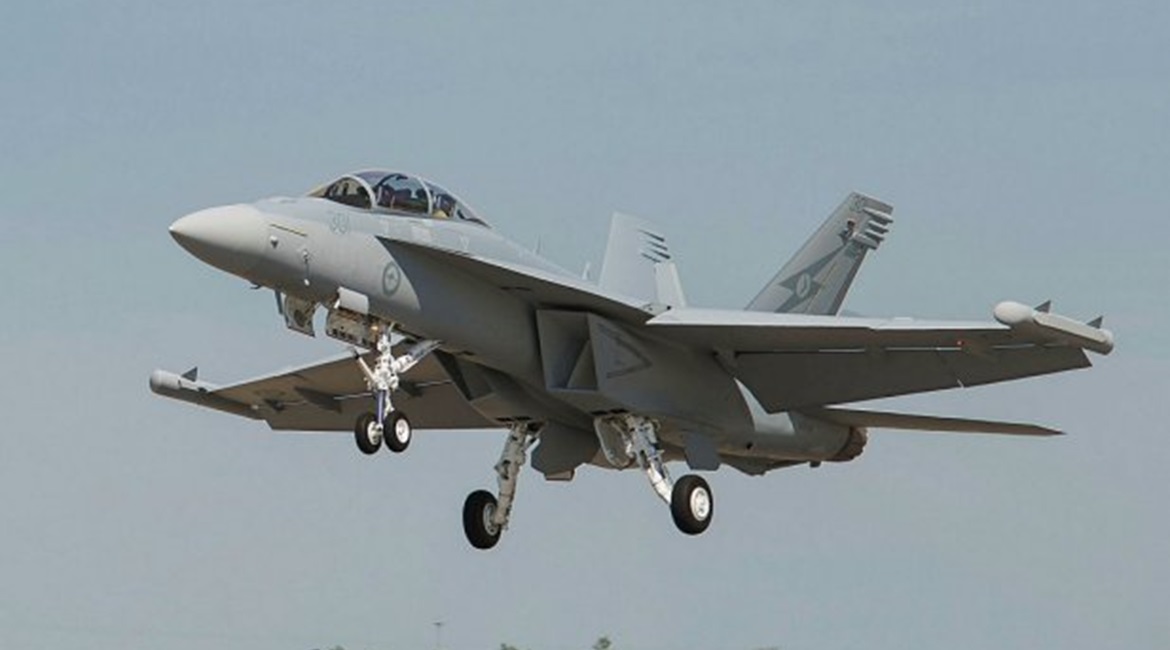
The US Navy (USN) and Boeing in late 2019 flew two autonomously controlled EA-18G Growler electronic attack aircraft as unmanned air systems (UAS) while using a third Growler as a mission controller for the other two, according to a company statement.
Boeing spokesman Justin Gibson said on 4 February that the company and the USN accomplished this by modifying three Growlers to support an open architecture (OA) processor [Distributed Targeting Processor Networked] and advanced networking [Tactical Targeting Network Technology]. These, he said, allowed for two of the aircraft to be transformed into UAS surrogate aircraft.

The US Navy and Boeing in late 2019 flew two autonomously controlled EA-18G Growlers as unmanned aerial systems while using a third Growler as a mission controller. Each aircraft had two pilots to perform take off and landing. (Boeing)
Each aircraft had two pilots to perform take off and landing. The unmanned Growlers were flown in multiple preset formations and provided air-to-air sensor data back to the manned aircraft. Gibson deferred a question about the range of the manned Growlers to the unmanned aircraft during the demonstration to the USN.
The Growlers were modified during mid-2019. Gibson said flight testing began in September and 21 demonstration runs were completed over the course of four flights at Naval Air Station (NAS) Patuxent River in Maryland as part of the Navy Warfare Development Command’s (NWDC’s) annual fleet experiment (FLEX) exercises.
Boeing said in its statement that the testing demonstrated the effectiveness of allowing Boeing F/A-18 Super Hornets and EA-18G aircraft to perform combat missions with unmanned systems. Gibson said the data from this manned-unmanned teaming (MUMT) demonstration is being analysed and that Boeing is developing plans for further MUMT capability demonstrations. These will include interaction between F/A-18, EA-18G, and UAS platforms.
Looking to read the full article?
Gain unlimited access to Janes news and more...






